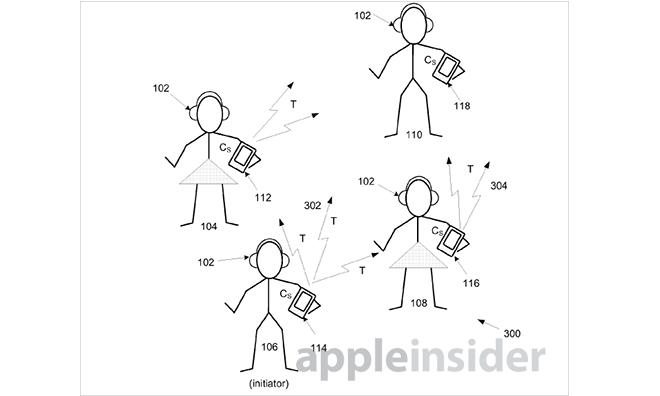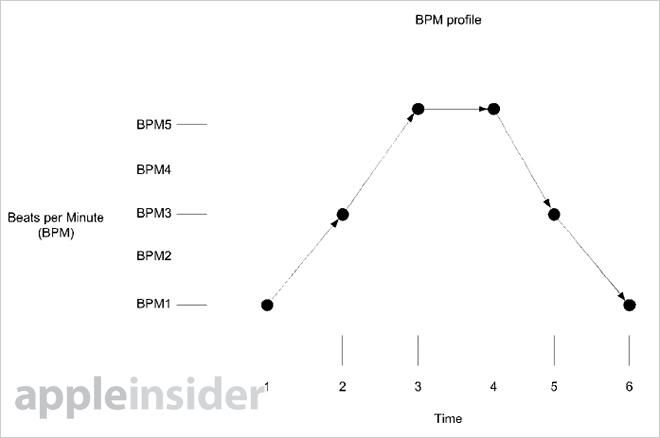Apple's 'silent disco' patent lets iOS device users hold distributed, private concerts
Last updated
A somewhat offbeat patent awarded to Apple on Tuesday describes a method of providing iOS users with a 'silent disco' experience, where musical characteristics sampled from a roving DJ's track trigger playback of similar tunes on a local device.
The U.S. Patent and Trademark Office on Tuesday granted Apple U.S. Patent No. 8,521,316 for a "Coordinated group musical experience," which details the "[s]haring of a music experience amongst a group of people each using a personal communication device," such as Apple's iPhone, iPad or iPod.
The technology is loosely based on so-called "silent discos," in which a group of people come together as they would any conventional concert, but listen to a DJ's music with headphones instead of loudspeakers.
Unlike silent discos, the music does not have to necessarily be the same song, or even from the same genre. Instead, musical characteristics such as tempo are sent to other users' devices, which in turn find stored music that most closely matches the DJ's track. Each person should only hear their own music for the full private listening effect. While the music may not be shared, the method isn't quite "mobile clubbing," a private group listening get together where location is the main thing participants have in common.
With Apple's patent, geographic location is not a limiting factor, as the invention can use ad hoc wireless networks, Bluetooth, cellular networks, the Internet, or any other means of wireless communication to connect listeners in near real time. To complete a shared group experience, the digital information of a song being played by one user, dubbed the "roving DJ," is passed to connected devices over said networks.
In some embodiments, information other than music-related data can be transferred over the network. For example, users can create avatars and accompanying personalized information to broadcast to the group. A session timer can also be sent out, while other data may include overall beats per minute of a song being played.
Some situations may call for a rotating DJ, meaning other users can participate as initiators of music selections for the group.
One of the more interesting scenarios is when the music manager, that is the app controlling media playback, adjusts the tempo of a track on the fly. This audio tweaking can be done to meet the beats per minute requirements set out by the DJ's song choice or whatever determined characteristics are guiding the session.
Finally, the patent notes that the system can be contained in a single app downloadable from the App Store.
While novel, the invention's use cases are somewhat murky beyond impromptu parties in noise regulated areas. The social aspects of the patent are interesting, however, as Apple has yet to successfully connect its massive base of iTunes users on a unified networking platform.
Apple's silent disco patent was first filed for in March 2010 and credits Sylvain Rene Yves Louboutin as its inventor.
 Mikey Campbell
Mikey Campbell















 Amber Neely
Amber Neely
 Thomas Sibilly
Thomas Sibilly
 AppleInsider Staff
AppleInsider Staff
 William Gallagher
William Gallagher
 Malcolm Owen
Malcolm Owen
 Christine McKee
Christine McKee










13 Comments
How come the female stick figures are wearing chic triangular skirts but the guy stick figures are nekkid?
Perhaps limited use as disco, but could be used in classroom settings for coursework, where DJ is the instructor, participants are students, music is course materials.
[quote name="waldobushman" url="/t/159224/apples-silent-disco-patent-lets-ios-device-users-hold-distributed-private-concerts#post_2385870"]Perhaps limited use as disco, but could be used in classroom settings for coursework, where DJ is the instructor, participants are students, music is course materials.[/quote] It looks like it's music specific rather than general sharing of data or other "course materials" that wouldn't be music. "Coordinated group musical experience Abstract Sharing of a music experience amongst a group of people each using a personal communication device is described. In some cases, the group can congregate at the same geographic location or at least some of the group can be located at widely dispersed locations and yet still be able to share a music experience. Information can be passed between the personal communication devices using point to point wireless communication, a distributed network of computers such as the Internet, a wireless cellular communication network, and so on. The information can include an indication of a shared music characteristic. The personal communication devices can use the shared music characteristic to identify and start to privately play those music items stored in the personal communication device having a characteristic that matches or most closely matches the shared music characteristic at about the same time."
How come the female stick figures are wearing chic triangular skirts but the guy stick figures are nekkid?
And why is that triangle upside down?
Just go to Seoul Dongdaeman market (the later the better) They have silent disco all the time. Pretty cool thing to see :)